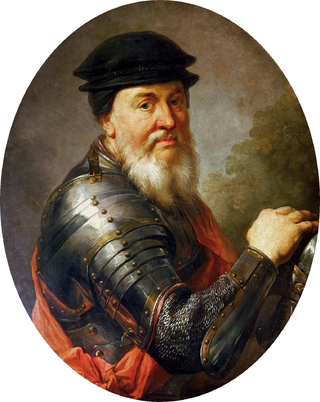
Hetman is a political title from Central and Eastern Europe, historically assigned to military commanders. Used by the Czechs in Bohemia since the 15th century, it was the title of the second-highest military commander after the king in the Crown of the Kingdom of Poland and the Grand Duchy of Lithuania from the 16th to 18th centuries. Throughout much of the history of Romania and the Moldavia, hetmans were the second-highest army rank. In the modern Czech Republic, the title is used for regional governors.

Count Jan Klemens Branicki was a Polish nobleman, magnate and Hetman, Field Crown Hetman of the Polish–Lithuanian Commonwealth between 1735 and 1752, and Great Crown Hetman between 1752 and 1771. One of the wealthiest Polish magnates in the 18th century, owner of 12 towns, 257 villages and 17 palaces. He was the last male representative of the Branicki family.
This article discusses the organizational and administrative structure of the Polish–Lithuanian Commonwealth.
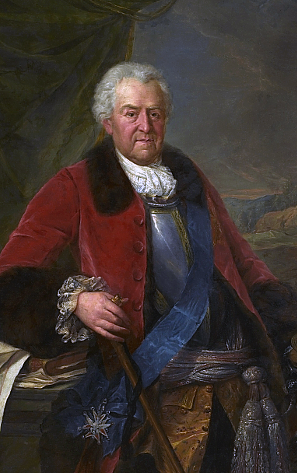
Stanisław Poniatowski was a Polish military commander, diplomat, and noble. Throughout his career, Poniatowski served in various military offices, and was a general in both the Swedish and Polish–Lithuanian militaries. He also held numerous civil positions, including those of podstoli of Lithuania and Grand Treasurer of the Lithuanian army in 1722, voivode of the Masovian Voivodeship in 1731, regimentarz of the Crown Army in 1728, and castellan of Kraków in 1752. Throughout his lifetime, he served in many starost positions.

Celestyn Czaplic of the Kierdeja coat of arms was a Polish–Lithuanian szlachcic, politician, writer and a poet. Remembered for his humorous poetry and impeccable moral character, he was a deputy to numerous Sejms of the Polish–Lithuanian Commonwealth, and a marshal of the Sejm of 1766. He held the offices of podczaszy, podkomorzy, and finally, from 1773, of the Master of the Hunt of the Crown. He was the recipient of the Order of Saint Stanislaus and the Order of the White Eagle.
Deputy pantler was a court office in Poland and Lithuania. They were the deputy of a pantler, and was responsible for the King's and Grand Duke's pantry.
Stolnik was a court office in Lithuania, Poland, Ukraine and Russia, responsible for serving the royal table, then an honorary court title and a district office. It approximately corresponds to English term "pantler".

Podskarbi in the Kingdom of Poland and later in the Polish–Lithuanian Commonwealth was minister responsible for the treasury. Since 1569 also a senatorial office. The title although meaning treasurer can be deconstructed as "under[King]-treasury" – treasury as an old-fashioned adjective. One other title was formed in the same way: "podkomorzy" – not meaning vice.
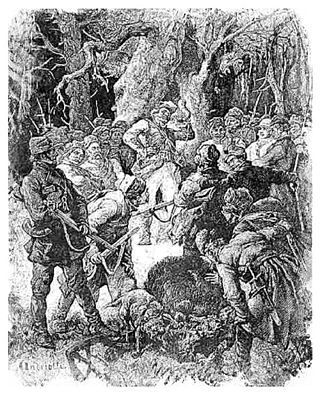
A wojski was an officer in medieval Poland and later in Lithuania, responsible for the security of voivodeships or districts at times when voivods and castellans had accompanied the szlachta (nobility) to war.
Master of the hunt was a Polish royal court official from the 13th century with responsibility for organising hunts and guarding royal forests against poachers. Masters of the Hunt also served at the regional courts of magnates in various provinces.
Swordbearer was a court office in Poland. Responsible for the arsenal of the King and for carrying his sword.

Marszałek was the title of one of the highest officials in the Polish royal court since the 13th century, and in the Grand Duchy of Lithuania since the 15th century. It was the highest-ranking of all court officials and was considered the most important advisor to the King of Poland.
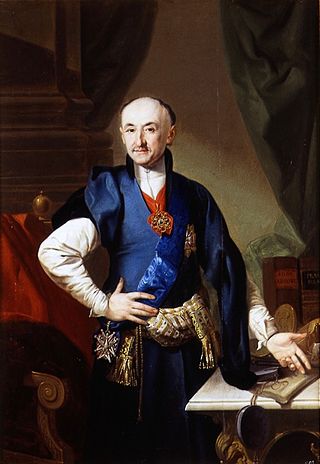
The Chancellor of Poland, officially, the Grand Chancellor of the Crown between 1385 and 1795, was one of the highest officials in the historic Crown of the Kingdom of Poland. This office functioned from the early Polish kingdom of the 12th century until the end of the Polish–Lithuanian Commonwealth in 1795. A respective office also existed in the Grand Duchy of Lithuania since the 16th century. Today the office of the chancellor has been replaced by that of the Prime Minister.
Incompatibilitas was a principle instituted in the Kingdom of Poland, which forbade an individual to hold two or more official administrative positions. The principle of incompatibilitas evolved in the 15th-16th centuries in response to a demand from middle and lesser nobility (Szlachta), and it was designed to curtail the sway of more powerful high nobility/aristocracy/plutocracy.

The Crown Tribunal was the highest appellate court in the Crown of the Kingdom of Poland for most cases. Exceptions were if a noble landowner was threatened with loss of life and/or property, when he could appeal to the Sejm court.

Throughout most of the history of Poland, the banner of Poland was one of the main symbols of the Polish State, normally reserved for use by the head of state. Although its design changed with time, it was generally a heraldic banner, i.e., one based directly on the national coat of arms: a crowned White Eagle on a red field. The banner should not be confused with the flag of Poland, a white and red horizontal bicolor, officially adopted in 1919.
A cup-bearer was historically an officer of high rank in royal courts, whose duty was to pour and serve the drinks at the royal table. On account of the constant fear of plots and intrigues, a person had to be regarded as thoroughly trustworthy to hold the position. He would guard against poison in the king's cup, and was sometimes required to swallow some of the drink before serving it. His confidential relations with the king often gave him a position of great influence.
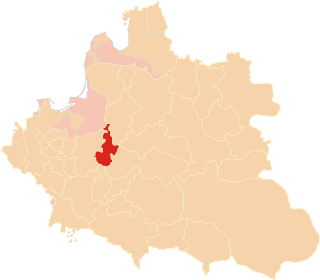
The Podlaskie Voivodeship was formed in 1513 by Sigismund I the Old as a voivodeship in the Grand Duchy of Lithuania, from a split off part of the Trakai Voivodeship. After Lithuania's union with the Kingdom of Poland in 1569 and formation of the Polish–Lithuanian Commonwealth, the voivodeship was transferred to the Polish Crown, where it belonged to the Lesser Poland Province of the Polish Crown.
Krzysztof Zborowski was a Polish Royal Deputy Cup-bearer of the Crown, supporter of the Habsburgs. In 1585 he was banished for conspiracy against Stephen Báthory of Poland.

Andrzej Sapieha was a Polish–Lithuanian nobleman (szlachcic) of the Sapieha family, who served as the Great Royal Deputy Cup-bearer of Lithuania, castellan of Minsk, and Voivode of Polotsk and Smolensk.










